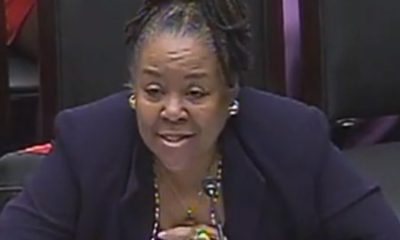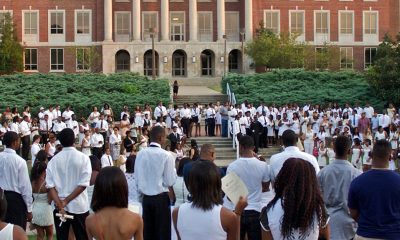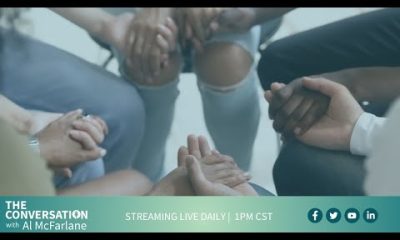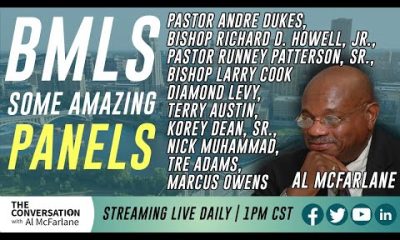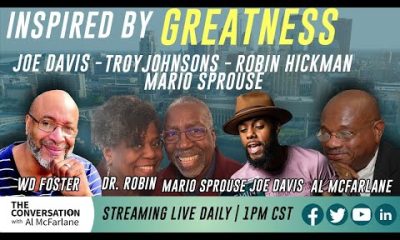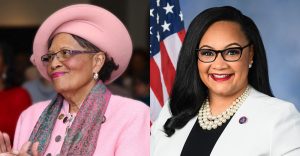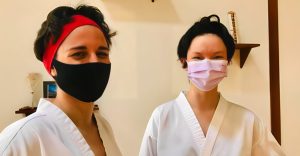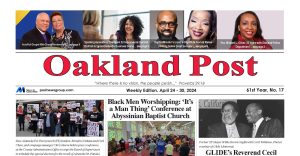#NNPA BlackPress
FILM REVIEW: Birds of Prey (and the Fantabulous Emancipation of One Harley Quinn)
NNPA NEWSWIRE — Robbie and her zany character are the soul of this endeavor. If nothing else, she is supremely animated, like she’s on her 10th espresso of the day and it’s only 9am. You can’t take your eyes off of her and her antics. The rest of the cast is pretty juiced too. Perez’s many faithful fans will follow her into any fire. Here, she’s almost as fun to watch as she was in the hilarious Pineapple Express. Smollett, Winstead, Basco and McGregor are fine.
By Dwight Brown, NNPA Newswire Film Critic
She was the Joker’s ladyfriend. Now she’s on her own. DC comic book fans will want to follow the morally challenged Harley Quinn as she creates new chaos. Will others join them?
Just four years ago, Harley and other incarcerated villains were recruited by a secret government agency to become the Suicide Squad (critically panned film but did $746M at worldwide box office). That task force was created to stop the world from destruction. Now, the very manic and merrily pig-tailed vixen has gone rogue. Dumped the boyfriend. Blowing up stuff for no reason at all. Cheating folks, starting fights and causing mayhem.
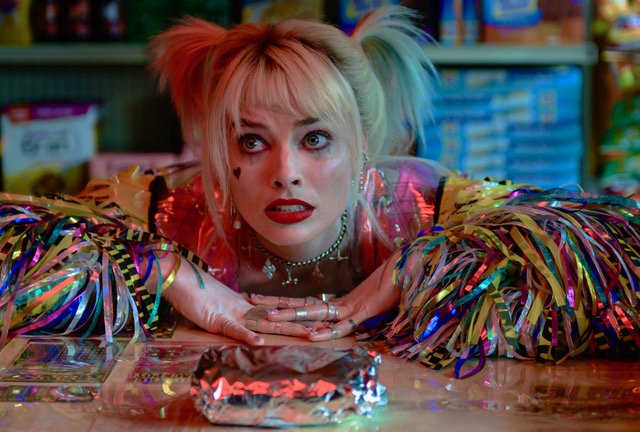
Margot Robbie in Birds of Prey
Harley refocuses when a substantial bounty is placed on a 13-year-old girl’s (Ella Jay Basco) head. The teenager is in possession of a large, coveted diamond. Save the child or collect the money? She wrestles with what little conscience she has as she figures out what to do.
Meanwhile, Harley is pursued by a cop, Renee Montoya (Rosie Perez), from the Gotham City Police Department. She hooks up with a singer/chauffeur Dinah Lance/Black Canary (Jurnee Smollett-Bell, Friday Night Lights) and is aided by a crossbow expert Helena Bertinelli/The Huntress (Mary Elizabeth Winstead, TV’s Fargo). She and these Birds of Prey are up against the meanest most bloodthirsty man in Gotham, nightclub owner Roman Sionis (Ewan McGregor, Trainspotting and TV’s Fargo) and his henchman Victor Zsasz (Chris Messina, Argo).
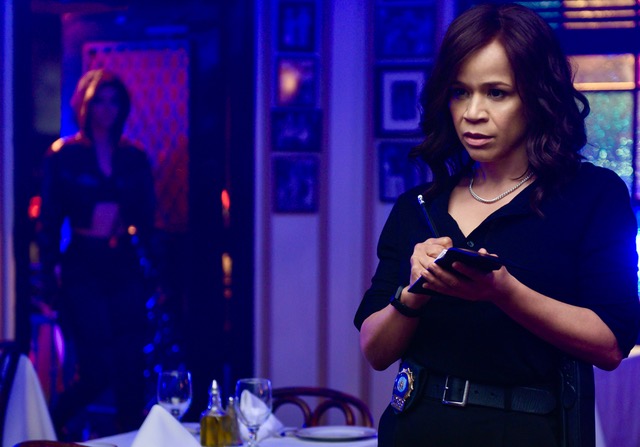
Rosie Perez in Birds of Prey
Robbie and her zany character are the soul of this endeavor. If nothing else, she is supremely animated, like she’s on her 10th espresso of the day and it’s only 9am. You can’t take your eyes off of her and her antics. The rest of the cast is pretty juiced too. Perez’s many faithful fans will follow her into any fire. Here, she’s almost as fun to watch as she was in the hilarious Pineapple Express. Smollett, Winstead, Basco and McGregor are fine.
The cast’s fate is left in the hands of the director and the screenwriter, who capture a zany comic book feel that is near-perfect for the R-rated superhero genre, but not quite extraordinary. Director Cathy Yan’s approach to the material is completely competent and energetic. Cartoonish letters and subheads appear on the screen, giving footage some visual fun. She knows how to gin up the cast’s performances and gives the film a very jumbled tone that remains consistent throughout.
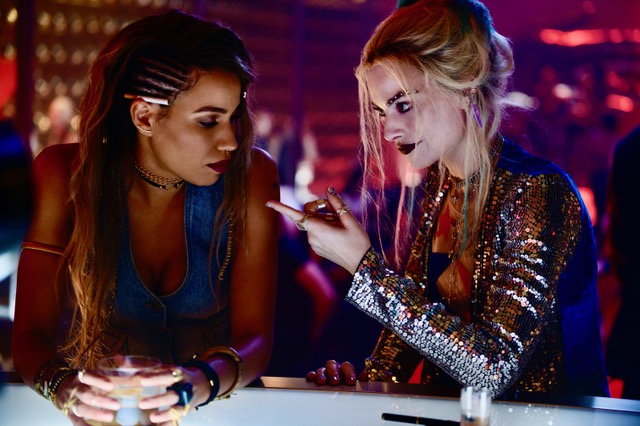
Jurnee Smollett-Bell and Margot Robbie in Birds of Prey
The clunkyish sets (production design by K.K Barrett, The Goldfinch; set decoration Jennifer Lukehart and Florencia Martin) are comical too, but not supremely dazzling. The cinematography (Matthew Libatique, A Star Is Born) captures everything, including fight scenes in slow motion. You may wish the fisticuffs and gun battles were either more original or ingeniously choreographed, like in John Wick: Chapter 3 – Parabellum. A stronger stunt coordinator could have lifted the pugilism up a level to the mind boggling category.

Margot Robbie, Chris Messina and Ewan McGregor in Birds of Prey
The script by Christina Hodson (Bumblebee) puts all the characters into play and gives them some fun things to say, peppered with enough curse words to stir up the target audience of adolescents. Quinn: “…you’re that singer that no one listens to.” Black Canary: “You’re the ass—- no one likes.” The dialogue isn’t bitchy; it’s just that the squad likes to bitch at each other. The screenplay, direction and pacing (editors Jay Cassidy, Evan Schiff) would have benefited greatly if a decision had been made to frontload the beginning intermittently with strong action sequences and less setup. It’s a good 40 minutes before any significant and engaging skirmish appears.
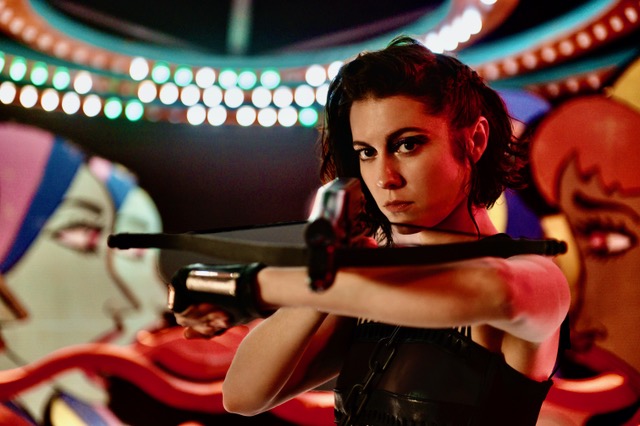
Mary Elizabeth Winstead in Birds of Prey
Constant flashbacks and retelling of subplots produce a stop and go that fights forward momentum. Car chases look pretty pedestrian compared to most other action movies. A scene when Roman berates a female customer in his nightclub and orders her to stand on a table, dance and strip, seems a bit sadistic, out-of-line and too Harvey Weinstein-ish for the proceedings. Yet, the film builds and builds tension until it crescendos in the finale with a very clever climax.
There is a young and female audience that will crave this kind of pandemonium. The same crowd that adored the Suicide Squad will too. If you’re a fan of the Deadpool series, this film will be right up your alley. But it is much closer to Deadpool 2 in feel and accomplishment than to the first Deadpool, which exhibited incredible visuals, hip style, consistently demented acting, unbelievable stunts, sick dialogue and an over-the-top depravity that could scar you psychologically for life.
Margot Robbie, who also produced the film, Cathy Yan and Christina Hodson are on to something. If they continue to develop the characters, advance their storylines and skim off the best parts of this film as they create the sequel, their future looks bright. In their corner, they’ll have a built-in audience of critic-immune movie fans who like their anti-heroine comic book films dark, with a strong dose of madness.
Visit NNPA News Wire Film Critic Dwight Brown at DwightBrownInk.com and BlackPressUSA.com.
#NNPA BlackPress
IN MEMORIAM: Ramona Edelin, Influential Activist and Education Advocate, Dies at 78
NNPA NEWSWIRE — Born on September 4, 1945, in Los Angeles, California, activist Ramona Edelin’s early years were marked by a commitment to education and social justice. According to her HistoryMakers biography, after graduating from Fisk University with a Bachelor’s degree in 1967, she pursued further studies at the University of East Anglia in England. She earned her master’s degree before completing her Ph.D. at Boston University in 1981.
The post IN MEMORIAM: Ramona Edelin, Influential Activist and Education Advocate, Dies at 78 first appeared on BlackPressUSA.

By Stacy M. Brown, NNPA Newswire Senior National Correspondent
@StacyBrownMedia
Once upon a time, Black Americans were simply known as colored people, or Negroes. That is until Ramona Edelin came along. The activist, renowned for her pivotal roles in advancing civil rights, education reform, and community empowerment, died at her D.C. residence last month at the age of 78. Her death, finally confirmed this week by Barnaby Towns, a communications strategist who collaborated with Dr. Edelin, was attributed to cancer.
Born on September 4, 1945, in Los Angeles, California, Edelin’s early years were marked by a commitment to education and social justice. According to her HistoryMakers biography, after graduating from Fisk University with a Bachelor’s degree in 1967, she pursued further studies at the University of East Anglia in England. She earned her master’s degree before completing her Ph.D. at Boston University in 1981.
Edelin’s contributions to academia and activism were manifold. She was pivotal in popularizing the term “African American” alongside Rev. Jesse L. Jackson in the late 1980s.
Jackson had announced the preference for “African American,” speaking for summit organizers that included Dr. Edelin. “Just as we were called Colored, but were not that, and then Negro, but not that, to be called Black is just as baseless,” he said, adding that “African American” “has cultural integrity” and “puts us in our proper historical context.”
Later, Edelin told Ebony magazine, “Calling ourselves African Americans is the first step in the cultural offensive,” while linking the name change to a “cultural renaissance” in which Black Americans reconnected with their history and heritage.
“Who are we if we don’t acknowledge our motherland?” she asked later. “When a child in a ghetto calls himself African American, immediately he’s international. You’ve taken him from the ghetto and put him on the globe.”
The HistoryMakers bio noted that Edelin’s academic pursuits led her to found and chair the Department of African American Studies at Northeastern University, where she established herself as a leading voice.
Transitioning from academia to advocacy, Edelin joined the National Urban Coalition in 1977, eventually ascending to president and CEO. During her tenure, she spearheaded initiatives such as the “Say Yes to a Youngster’s Future” program, which provided crucial support in math, science, and technology to youth and teachers of color in urban areas. Her biography noted that Edelin’s efforts extended nationwide through partnerships with organizations like the National Science Foundation and the United States Department of Education.
President Bill Clinton recognized Edelin’s expertise by appointing her to the Presidential Board on Historically Black Colleges and Universities in 1998. She also co-founded and served as treasurer of the Black Leadership Forum, solidifying her standing as a respected leader in African American communities.
Beyond her professional achievements, Edelin dedicated herself to numerous boards and committees, including chairing the District of Columbia Educational Goals 2000 Panel and contributing to the Federal Advisory Committee for the Black Community Crusade for Children.
Throughout her life, Edelin received widespread recognition for her contributions. Ebony magazine honored her as one of the 100 Most Influential Black Americans, and she received prestigious awards such as the Southern Christian Leadership Award for Progressive Leadership and the IBM Community Executive Program Award.
The post IN MEMORIAM: Ramona Edelin, Influential Activist and Education Advocate, Dies at 78 first appeared on BlackPressUSA.
#NNPA BlackPress
Tennessee State University Board Disbanded by MAGA Loyalists as Assault on DE&I Continues
NNPA NEWSWIRE — Recent legislative actions in Tennessee, such as repealing police reform measures enacted after the killing of Tyre Nichols, underscore a troubling trend of undermining local control and perpetuating racist agendas. The new law preventing local governments from restricting police officers’ authority disregards community efforts to address systemic issues of police violence and racial profiling.
The post Tennessee State University Board Disbanded by MAGA Loyalists as Assault on DE&I Continues first appeared on BlackPressUSA.
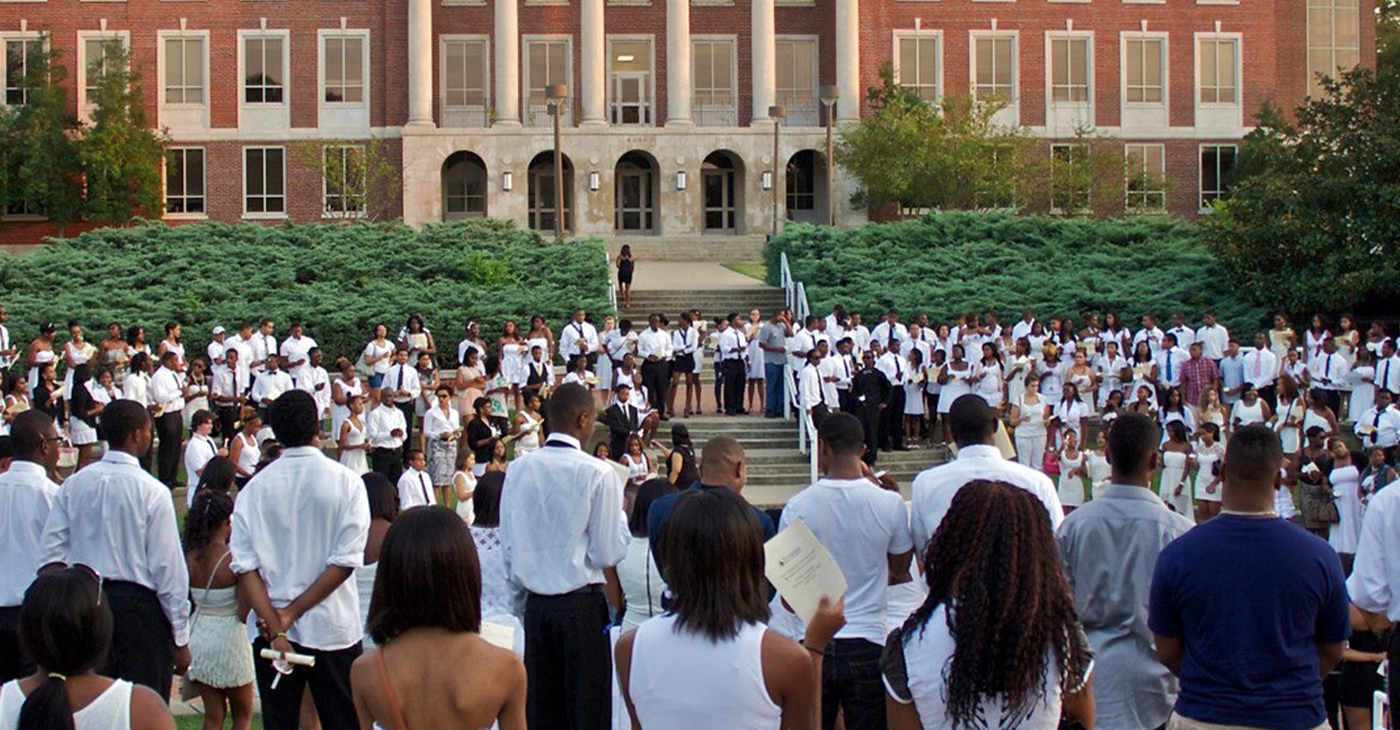
By Stacy M. Brown, NNPA Newswire Senior National Correspondent
@StacyBrownMedia
Tennessee State University (TSU), the state’s only public historically Black college and university (HBCU), faces a tumultuous future as Gov. Bill Lee dissolved its board, a move supported by racist conservatives and MAGA Republicans in the Tennessee General Assembly, who follow the lead of the twice-impeached, four-times indicted, alleged sexual predator former President Donald Trump. Educators and others have denounced the move as an attack on diversity, equity, and inclusion (DE&I) and a grave setback for higher education.
Critics argue that TSU’s purported financial mismanagement is a manufactured crisis rooted in decades of underinvestment by the state government. They’ve noted that it continues a trend by conservatives and the racist MAGA movement to eliminate opportunities for Blacks in education, corporate America, and the public sector.
Gevin Reynolds, a former speechwriter for Vice President Kamala Harris, emphasizes in an op-ed that TSU’s financial difficulties are not the result of university leadership because a recent audit found no evidence of fraud or malfeasance.
Reynolds noted that the disbanding of TSU’s board is not an isolated incident but part of a broader assault on DE&I initiatives nationwide. Ten states, including Tennessee, have enacted laws banning DE&I policies on college campuses, while governors appointing MAGA loyalists to university trustee positions further undermine efforts to promote inclusivity and equality.
Moreover, recent legislative actions in Tennessee, such as repealing police reform measures enacted after the killing of Tyre Nichols, underscore a troubling trend of undermining local control and perpetuating racist agendas. The new law preventing local governments from restricting police officers’ authority disregards community efforts to address systemic issues of police violence and racial profiling.
The actions echo historical efforts to suppress Black progress, reminiscent of the violent backlash against gains made during the Reconstruction era. President Joe Biden warned during an appearance in New York last month that Trump desires to bring the nation back to the 18th and 19th centuries – in other words, to see, among other things, African Americans back in the chains of slavery, women subservient to men without any say over their bodies, and all voting rights restricted to white men.
The parallels are stark, with white supremacist ideologies used to justify attacks on Black institutions and disenfranchise marginalized communities, Reynolds argued.
In response to these challenges, advocates stress the urgency of collective action to defend democracy and combat systemic racism. Understanding that attacks on institutions like TSU are symptomatic of broader threats to democratic norms, they call for increased civic engagement and voting at all levels of government.
The actions of people dedicated to upholding the principles of inclusivity, equity, and justice for all will determine the outcome of the ongoing fight for democracy, Reynolds noted. “We are in a war for our democracy, one whose outcome will be determined by every line on every ballot at every precinct,” he stated.
The post Tennessee State University Board Disbanded by MAGA Loyalists as Assault on DE&I Continues first appeared on BlackPressUSA.
#NNPA BlackPress
Braxton Haulcy and the Expansion of Walker|West Music Academy
May 24, 2023 – Walker West Music Academy gets an early start on expansion. Join us for a Wednesday episode of The …
The post Braxton Haulcy and the Expansion of Walker|West Music Academy first appeared on BlackPressUSA.
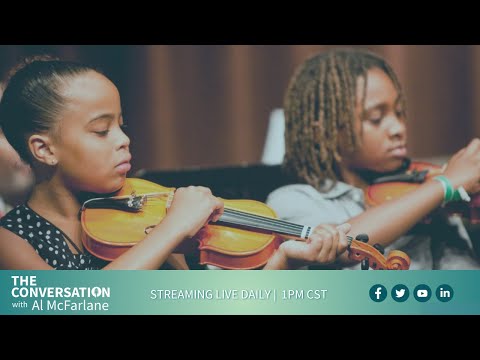
May 24, 2023 – Walker West Music Academy gets an early start on expansion. Join us for a Wednesday episode of The …
The post Braxton Haulcy and the Expansion of Walker|West Music Academy first appeared on BlackPressUSA.
-
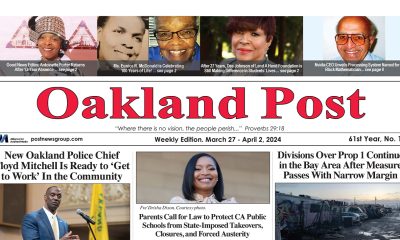
 Activism4 weeks ago
Activism4 weeks agoOakland Post: Week of March 27 – April 2, 2024
-
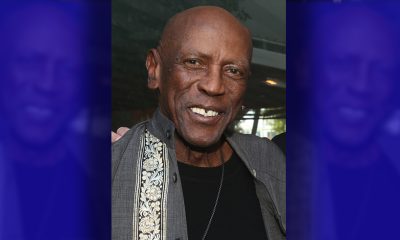
 #NNPA BlackPress4 weeks ago
#NNPA BlackPress4 weeks agoBeloved Actor and Activist Louis Cameron Gossett Jr. Dies at 87
-
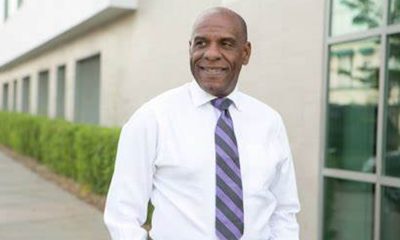
 Community1 week ago
Community1 week agoFinancial Assistance Bill for Descendants of Enslaved Persons to Help Them Purchase, Own, or Maintain a Home
-
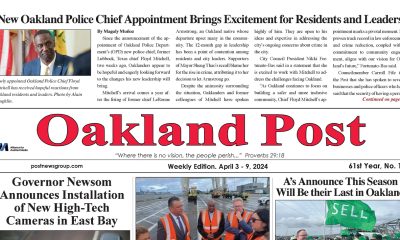
 Activism3 weeks ago
Activism3 weeks agoOakland Post: Week of April 3 – 6, 2024
-
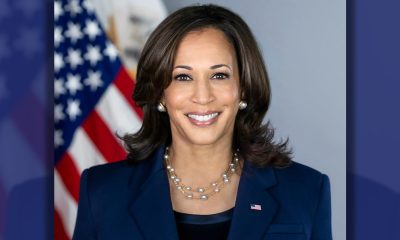
 Business2 weeks ago
Business2 weeks agoV.P. Kamala Harris: Americans With Criminal Records Will Soon Be Eligible for SBA Loans
-
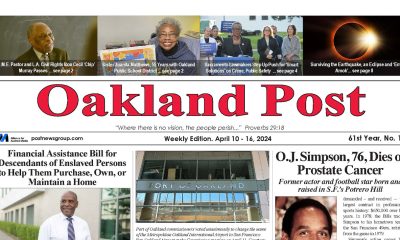
 Activism2 weeks ago
Activism2 weeks agoOakland Post: Week of April 10 – 16, 2024
-
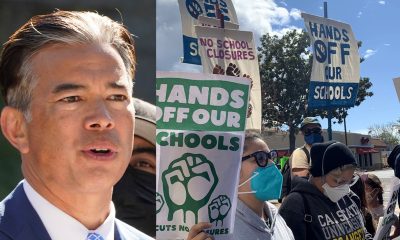
 Community2 weeks ago
Community2 weeks agoAG Bonta Says Oakland School Leaders Should Comply with State Laws to Avoid ‘Disparate Harm’ When Closing or Merging Schools
-
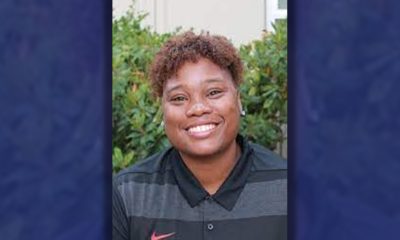
 Community7 days ago
Community7 days agoOakland WNBA Player to be Inducted Into Hall of Fame

